- News
- Reviews
- Bikes
- Accessories
- Accessories - misc
- Computer mounts
- Bags
- Bar ends
- Bike bags & cases
- Bottle cages
- Bottles
- Cameras
- Car racks
- Child seats
- Computers
- Glasses
- GPS units
- Helmets
- Lights - front
- Lights - rear
- Lights - sets
- Locks
- Mirrors
- Mudguards
- Racks
- Pumps & CO2 inflators
- Puncture kits
- Reflectives
- Smart watches
- Stands and racks
- Trailers
- Clothing
- Components
- Bar tape & grips
- Bottom brackets
- Brake & gear cables
- Brake & STI levers
- Brake pads & spares
- Brakes
- Cassettes & freewheels
- Chains
- Chainsets & chainrings
- Derailleurs - front
- Derailleurs - rear
- Forks
- Gear levers & shifters
- Groupsets
- Handlebars & extensions
- Headsets
- Hubs
- Inner tubes
- Pedals
- Quick releases & skewers
- Saddles
- Seatposts
- Stems
- Wheels
- Tyres
- Health, fitness and nutrition
- Tools and workshop
- Miscellaneous
- Tubeless valves
- Buyers Guides
- Features
- Forum
- Recommends
- Podcast
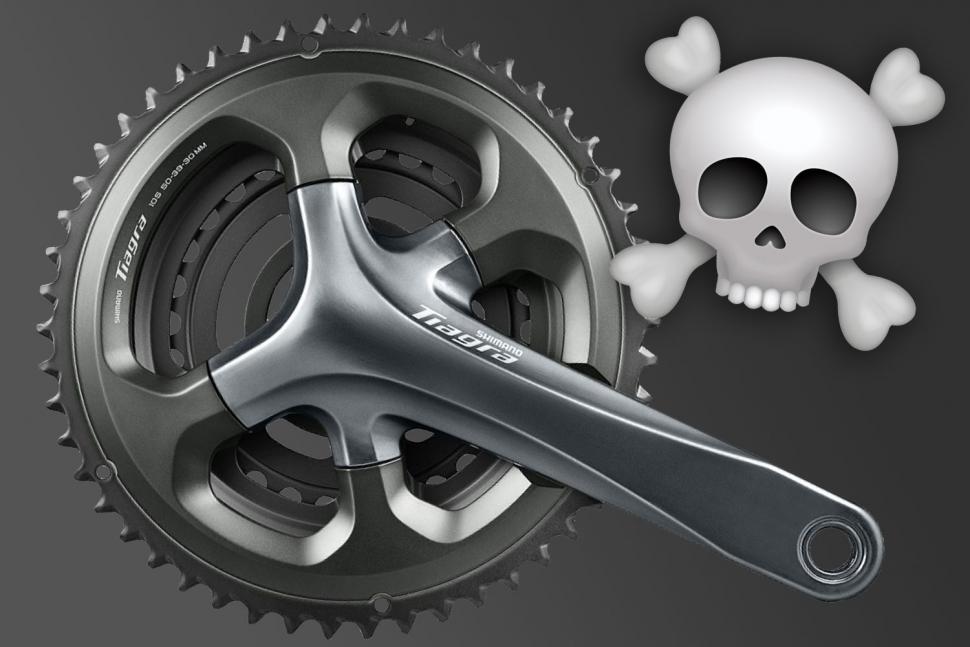 The death of the triple chainset August 2018
The death of the triple chainset August 2018Are we seeing the death of the triple chainset?
Triple ring chainsets have fallen out of fashion in recent years, but are they threatened with extinction?
Modern road bikes can come with any one of a number of different types of chainset fitted as standard - there's standard, compact and semi-compact chainsets for starters. But just because your bike came fitted with a certain type of chainset doesn't necessarily mean it's the right one for you.
We asked SRAM, Shimano and Campagnolo if they feel that the triple chainsets days are numbered. Here are their replies:
Campagnolo
Campagnolo hasn't introduced any new triple chainsets since 2012, but their Athena 11-speed, and Centaur and Veloce 10-speed triples are still available.
Campagnolo told us:
While most athletes are covered by the gearing offered by compact chainsets and larger cassettes, there are still a faithful few who are quite keen to use the triple. Several requests from areas in France, Belgium and Canada strangely enough.
However, with the advantages of the compact crankset and a movement towards larger tooth count cassettes we believe that those wishing to run a triple ring crankset will diminish further as they will adopt increasingly more often the two chainring solution. At the moment we still offer the triple.
SRAM
As we mentioned above, SRAM has never bothered with road bike triples, and in recent years has been promoting single-chainring gear systems as the ultimate in simplicity even for racing. What they had to say about triples isn't very surprising then:
Is the triple chainset dead?
Dead & buried.
Where do you see the future of modern road bike chainsets?
There’s a bright future for 1x. Simpler, quieter, more secure. Current cassette options allow gear range for most cycling disciplines. 1x even provides a more aerodynamic drivetrain for TT and triathlon. 2x remains dominant, of course, because it can provide the widest gear range and closer gear ratio steps.
Shimano
You could once get a Dura-Ace triple chainset if you were building a very posh pass-stormer, but no more. As its top-end groupsets switched from 10 to 11 sprockets, Shimano quietly dropped triples.
Shimano told us:
Within Shimano's current road line up triple chainsets are more common at Tiagra level and below. These groupsets attract a wider audience/riding style and therefore the demands on the components are different to those favoured by competitive and performance cyclists.
Triple chainsets have closer gear ratios, making the steps between the gears easier to move through, and therefore increasing the efficiency of personal performance. For many riders, a triple chainset provides options to allow you to continue cycling in many circumstances/conditions.
However, at the competitive end of cycling, trends for many years have been in favour of double chainsets. Wider cassette ratios are now able to cover the vast majority of gear ranges, in combination with lower crankset weight values that performance athletes demand.
Which chainset is right for you?
So if the triple is dead, what are your common choices? Let's go through the main road systems to help you find the right one for you.
53/39 'Standard' or racing set-up
Ideal for: Pros, strong riders, or flat conditions (maybe a bit more than that but you get my drift)
50/34 'Compact'
Ideal for: Most people, good all-rounder ideally suited to hilly conditions
52/36 'Semi-compact'
Ideal for: Increasingly pros, but also the rest of us mortals too, strong all rounder, ideal for hilly conditions, paired with 11-32 cassette should get most people up even the biggest mountains.
48/32 and 46/30 'Sub-compact'
Ideal for: Touring, gravel and adventure bikes, it takes the existing idea of the compact chainset a step further, yielding gearing that’s ideal for bikes used across a range of surfaces and terrains
1x11 single chainring
Ideal for: Cyclocross, gravel and adventure riding. The single ring and wide-range (10-42t) cassette provides much of the range of a compact and shifting simplicity along with increased mud and ground clearance
- Read more: Which chainset is right for you?
The compact killed the triple
Gearing options have increased substantially over the years with the advent of the compact chainset the biggest reason for the demise of the triple. The arrival of the compact immediately sparked debate surrounding the death of the triple chainset, and they’re now much less noticeable in any of the big three groupset manufacturers - SRAM, Shimano and Campagnolo - ranges than they used to be.
Before the compact came along, your crankset choice was largely split between a double for racing and a triple for touring and Audax riding. At this time of limited choice, a triple was appealing for any non-racing applications, particularly touring or Audax bikes laden with luggage, the lower gears helping to spin up the climbs.
The new wave of sportive bikes sparked the development for a chainset that offered most of the range of the triple but with better chainline, lower weight and, arguably, better looks on a sporty carbon bike.
- Struggling on the hills? If you need lower gears to make climbing easier, here's how to get them
The compact was an instant success. Popularised by FSA soon after the turn of the century, the company met these sportive bike requirements and when paired with the increased range of the 10-speed cassettes introduced at roughly the same time, provided most of the same low gearing as a typical triple setup.
A triple does offer a wide range of gears, but there is a lot of duplication. A 50/34 compact with a 12-29 11-speed cassette provided minimal difference in range from a 53/42/30 triple with a 13-29 cassette. The small compromise in reduced gear choices and range was compensated by reduced less gear duplication, lower groupset system weight and a narrow Q-factor.
Compacts were even used in professional races too, Tyler Hamilton using a compact on a mountain stage of the 2003 Tour de France. The fate of the triple for the new breed of performance focused sportive bikes and cyclists was sealed forever.
The chainset evolution
The evolution of the chainset and the reduction of the number of rings has been helped by the growing cassette range and increased gears of each subsequent groupset release. Back in the day, you’d be lucky with a 6-speed, 11-23 cassette, fine for racers, but the only way to get low gears without huge gaps — for touring, Audax or leisure cycling — was to fit a triple chainset.
With the advent of 9, 10 and 11-speed groupsets and an increased cassette range, with 11-30 and 11-34 now common options, there’s less need for a triple chainset. You can now get a wide spread of ratios with less duplication of gears.
A triple chainset is essentially a double with a smaller chainring bolted on. Triple chainsets require special front derailleurs and shifters, along with a matching long cage rear derailleur to accommodate the long chain needed to cover the full range of sprocket options. Reducing the need for specific components was a boon to manufacturers as it tidied up product lines.
And so they fell out of favour with manufacturers. Shimano and Campagnolo wasted no time dropping triples from their top-end ranges, Dura-Ace and Record respectively, replacing them with new compacts. SRAM didn’t even make a triple chainset when it first got into the road bike groupset market, and has been a proponent of the single ring drivetrain.
Now there are an increasing array of options. The semi-compact (52/36t) has been a hit, popular with racers and performance minded cyclists, and some reckon it even threatens the compact.
More recent is the sub-compact (48/32 and 46/30) for adventure and touring cyclists where lower gears for tackling hillier terrain with heavier bikes are required. With a 46/30 and an 11-34 cassette you're looking at the kind of gear range that used to be only easily achieved with a triple, and it's possible to go even wider and lower if you bend the rules a bit.
- First look: Does the Praxis Works Alba 48/32 herald the era of the sub-compact chainset?
Add to the mix too SRAM’s 1x11 approach, which pairs a single chainring with a super wide-range cassette, and it looks like the triple chainset has been pushed to the very fringes of cycling.
Do you think the triple is dead or is there still a place for it?
David worked on the road.cc tech team from 2012-2020. Previously he was editor of Bikemagic.com and before that staff writer at RCUK. He's a seasoned cyclist of all disciplines, from road to mountain biking, touring to cyclo-cross, he only wishes he had time to ride them all. He's mildly competitive, though he'll never admit it, and is a frequent road racer but is too lazy to do really well. He currently resides in the Cotswolds, and you can now find him over on his own YouTube channel David Arthur - Just Ride Bikes.
Latest Comments
- mctrials23 10 min 59 sec ago
Part of it is that but a large part of it is just deeply ingrained hatred of cyclists because cyclists are blamed for ridiculous things and drivers...
- chrisonabike 22 min 46 sec ago
The exact situation shown in this photo is pretty common near me....
- brooksby 1 hour 24 min ago
Nope - had an urgent appointment with his tax advisor
- brooksby 1 hour 28 min ago
I'm not sure which one of them looks more like a crook…
- OnYerBike 2 hours 1 min ago
It might not be Miche-specific, but across all the thru-axle, disc brake wheelsets in my household (including Hope, DT Swiss and Bitex hubs), none...
- S.E. 4 hours 12 min ago
That made me think of that "Hot Fuzz" comedy movie... so many truths in it.
- Rendel Harris 6 hours 5 min ago
Good to see a V-brake option available for all those people who ride Cosmic Elites with V-brakes...seriously, you must know really that the answer...
- mattw 6 hours 43 min ago
Get thyself over to Buildhub - a community owned forum where I am on the moderation team ("Ferdinand") which is about self-build and renovation....
- Destroyer666 16 hours 47 min ago
Nonono, not those, but those that have constructed Italian cars and motorcycles that have been driven to hundreds of race and championship...
- RoubaixCube 16 hours 56 min ago
This may well be the case although Im unaware of the brands popularity on their home turf. I used to see them being advertised more in the UK...
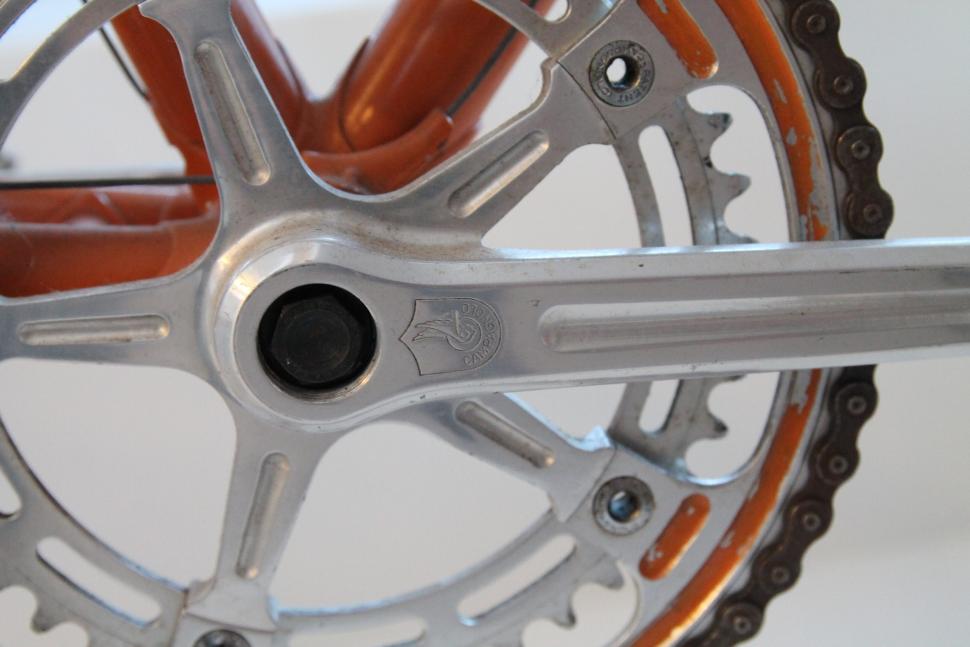
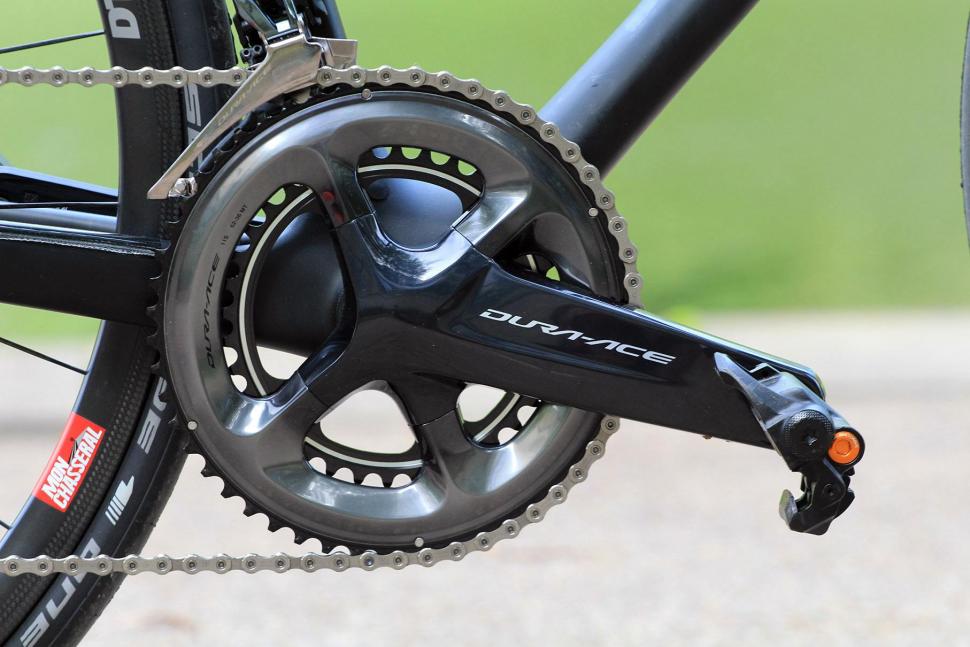
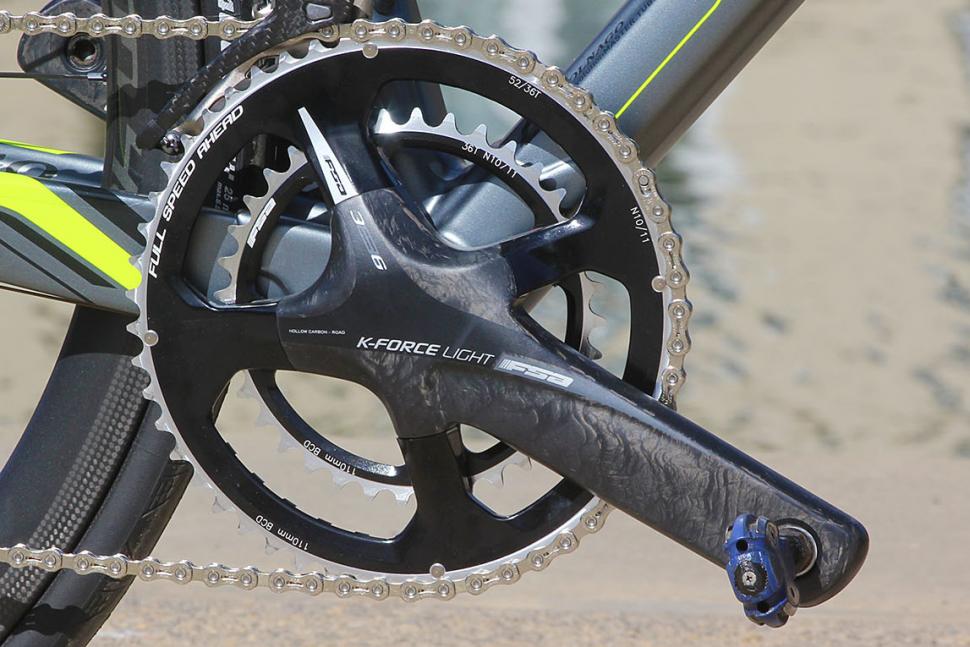
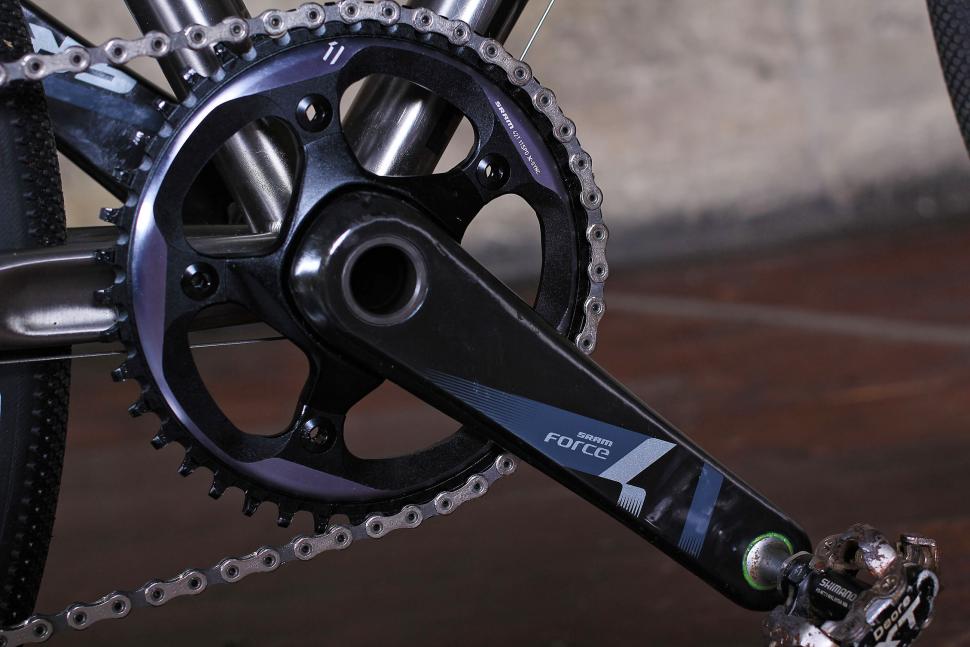
Add new comment
128 comments
I like a Westmalle Tripel or a Karmeliet Tripel.
Prefer Westmalle's Dubbel myself - but I can't ever see myself being tempted by a single. Unless it's a malt.
How do you feel about a Kasteel Barista Quad? Too much?
Long live the triple!
I have three bikes currently in use; the B'Twin on my Trek trainer came with a triple but, from the point of view of my trainer I only use the big ring (so I could replace it with a single ring - but why bother?); the double on my B'Twin Mach CF and the triple on my Panorama DeLuxe World Tourer.
Interestingly, on some of my hillier training routes I'm faster on the Panorama than on the much lighter Mach CF because, as a big bloke, mass really starts to count against you when you get to over a 6% gradient and the touring bike gearing enables me to keep the cadence high.
Similarly, for load carrying, you cannot beat a triple, again because it gives you more flexible options for keeping the cadence high.
Last year I organized an 80 mile round trip from London to Southend (and back) and found a few really tough hills (in Essex!!!). I rode the route many times with friends. Interestingly, despite being the biggest cyclist (in respect of size and mass) I was almost always first up the big inclines because I could use the third ring on the triple and keep up the cadence whereas smaller riders on carbon bikes simply weren't geared for the hills because they were using 11-23 cassettes. A triple would certainly have helped them out. Eventually they would put a 12-36 cassette on, which helped but the gearing wasn't as well spaced as the gearing on my tourer.
We are not all speedy boys and girls and, for sure, we sexagenarians (and beyond), who have survived much of what life has yet to throw at the youngsters and who make up a vast cohort of dedicated cyclists may appreciate the benefits of the more flexible offering of the triple for some decades yet.
All that said, I love innovation and, pockets permitting, I'm always happy to try something new.
I'm one of those who just likes to ride a bike. Bought a new tourer a couple of years back,lost count of the times I was offered Audax, gravel and other bikes with the so-called compact-double where the gears were just too high, and (on paper) the jumps looked too big.
Triple - a la MTB or hybrid - is right foe me and I suspect a good many others - without having to go for thinner chains etc. that will probable wear out quicker for "normal" cyclists (mine is a 3 x 8 setup)
rock-on Spa Cycles!
I prefer a triple too. Again, being older it's what I'm familiar with so set-up and maintenance isn't an issue. I do have a double (53/39) on one road bike and have had various singlespeed/double/triple on MTBs.
The one I don't get though is the fashion for single ring on MTB coupled with a cassette sporting a dinner-plate sized cog. Some say it's for better ground clearance but the cranks don't get shorter with a single ring and the vulnerable rear derailleur needed for the dinner plate is practically dragging the ground when in the monster cog. On a downhill bike fair enough but the minute you couple it with that huge cog and associated dangly bits just to be able to ride uphill then the idea is flawed (i.m.o.).
I want a good Tripple. end of story.
Both my road bike have tripples so I have close grears for smoth riding. and then a granny gear for when the hills go stuppid. you can't do that with a double or single. end of story.
I would love a elecronic tripple as it would manage the worst bit of the tripple by fine tweaks of the front derailer as you move at the back. Please some one make a good one (Shimano please).
The ability to mix and match is the best. For commuting (my ride is quite flat) I am current using a 50/38 setup up front. Given that I only seldom go over 50km/h on my commute, I could easily opt for a smaller big ring. What would probably be ideal for my commute is something like a 46/38 or 46/39 setup, coupled with a 12-25 cassette.
I think one of the best advice I got was if you can't do it on a heavy gear, spin it. Installed a mountain triple on my road bike early '90's, paired it with a close ratio freewheel(then), now a cassette, tooth difference no more than 2, never looked back since then and still enjoying my triple.
Several of the old soaks I ride with on occasions offered the same advice to me when I was riding with a 42t crank and a 11-34 9-speed cassette which was fine for commuting but lacked the range for longer rides in the rolling hills that surround my home city of Bristol. I acquired a triple crankset (an old Ultegra 52/39/20) and front derailleur and haven't looked back since. The granny gear is brilliant and there are fewer climbs that beat me now though the next time the triple needs replacing I'll be getting a mtb triple instead.
this is seemingly a problem for manufacturers because they'd rather cut their production costs down and force the market to bend to their will rather than the market dictating what they want.
when you think how they ensure their new stuff is not backwards compatible or try to, it stinks big time.
Why was SRAM even asked to comment especially with respect to road triples, it's pretty clear what their position is.
40/42t sprockets, sure it'll get you up steep terrain but at a cost of massive jumps in between, no thanks, whether touring, ambling with a partner, kids or riding balls out, having the jumps reasonably close together means it's easier to maintain a comfortable cadence and not find your legs spinning like a whirling dervish or going down to a much slower RPM unless you flick two or three sprockets.
52/36/24 with a 12-30 is my sweetspot in terms of gear range for all occasions, whilst the vogue for many roadies is to go with a 34-32 to get up the hills I still get the impression for many this is still too high a gear especially for longer incIines or very steep roads, you can get another 3% lower with a 33T but then that's it.
Anything past a 32t and you're into the mid cage rear mech though some of the new stuff like the ugly 9100 rear d can handle a 32t apparantly, the previous DA9000 could do a 32 if you fiddled with the b screw.
Still once past 32 and because the manufacturers insist on having 11t starting sprockets the gaps are starting to get wider and wider. Sure if things change to 12/13/14 speeds at the back that might 'solve' a problem but it creates a shit ton more problems by doing so, not least frames, wheels, chains, gear changers, the cassettes themselves and so on.
I'm sticking with 6703 STIs on my audax, I don't need 11 speed for it and will use doubles and triples for particular bikes/rides as I see fit, dropping triple out of the equation for road going bikes and even for MTB I think would be a mistake but then the manufacturers can do what they want.
Agree with second point but not am convinced by the idea they are 'forcing the market'. OEM is a massive proportion of production. Compare the number of new road bike models specced with each configuration.
No manufacturer wants to make 3 variants for each groupset level, when 1 sits around for goodness knows how long and is incompatible with the others - a triple usually requires a different LH shifter and front derailleur. I can't see many people choosing that when wide range cassettes are all the rage. And when did you last hear someone saying that Dura-Ace with a triple chainset was what they were after? Not exactly emulating the 'pro' look now, is it.
Also, there are probably good margins on a 11-42t cassette, which you'll need to replace rather more often than the chainset.
I dithered a lot before getting a triple to replace the (old, non-compact) double on my bike. Possibly it was the wrong decision, but I haven't regretted it. Yes, there's a lot of duplication, but that means I can generally just leave it on the middle ring when commuting, but do have the wider range when wanted.
1x is pointless for serious road riding, although I can see serious benefits for off road use, and for casual riders, many of whom seemingly fail to understand how a triple chainset works, and would be much better off with one less lever on the bars to contend with. Otherwise, the massive gaps in gearing is just unpleasant.
I detest compact chainsets, in both their 50/34 and 52/36 incarnations. The gap between the rings kills your cadence, and the huge gaps between the gears feels clumsy. I ride much more efficiently on my 53/42, switching chainrings much more frequently than on my compact. I use the small ring, rather than trying to force my way up hills in the big ring because the small ring is too small without shifting half way across the cassette (so smooth...).
My ideal race ride would have a modern standard 53/39 for the weight savings of having two rings. For casual rides and steep hills, a 52/42/32 or suchlike would be wonderful, giving a perfectly feasible bottom gear, while still allowing for smooth shifts between chainrings, and enabling a close ratio cassette at the rear - absolutely the best of both worlds.
I'm not just reminiscing about the good old days when bikes were heavy and kit was wrinkly. I'm 17, and grew up on compacts. I would never buy one now, having ridden standards. A standard with an extra granny ring is surely the way to go.
You said it perfectly. Relieved to see a sensible contribution to this thread! You are right, most people don't understand the benefits of 3 chain rings, evident when they remark such things as ''but there are so many duplicate gears!!'' and ''you can get the same range with 'X' cassette and a compact'' etc....etc...
Some dismiss it on aesthetics alone, and they are not worth the time to talk to (in fact most probably won't consider it based on aesthetics and 'image', the flawed arguments are just icing on the cake for them). Function is beautiful to me, I don't care how 'clean' it looks, if it's inferior it doesn't qualify.
Also not an oldie here reminiscing about 'the good old days'. I'm 19, although I'm often labelled a 'retro grouch'... Are you on insta or FB? @Swansea_Road_Bikes here.
They may take our downtube shifters, but they'll never take our triples!
With ever narrower chains, surely the time of the quadruple is almost upon us. Think of the marketing advantage of being able to put "48 speed" on the promotional material for a new bike equipped with 12 cogs on the back and 4 rings at the front (and the obligatory bluetooth head unit displaying gears remaining before your speed drops below that required to remain upright.)
It used to be possible. Obviously didn't catch on!
The triple will die when Shimano stops supporting it. No sign of that yet.
These are just fads. The route back to triples is laid out already.
When I first got a compact with a wide ranging cassette I felt would prefer the smaller jumps between sprokets from a triple with a narrow range cassette. I haven't used a 1X but I've seen videos of off-the-peg bikes that shift up the cassette when pedaling backwards and very bad chainlines that increase drive train loses. That along with tractor tyres and creaky bottom brackets all add up to bikes that are just waiting to be called out as inefficient and high maintenance.
Give me 500% range with no energy and cog teeth consuming cross chaining, with decent increments and a hollowtech crank that will cost no more than a Sora groupset does and I will be happy
I think triples will eventually die out as more and more people are introduced to cycling on doubles both on road bikes and MTBS. Or like myself, many may transfer from mtbing and bring along what we are used to.
Maybe just maybe we'll be here discussing the death of doubles due to the introduction of 13 cog cassettes on 142 wide axles, or the death of rim brakes....
I'm still riding a tripple on my racing bike, even tough i hardly ever use it: only when the odd 20 percent climb comes along.
Then thing with Doubles is that you have to adapt your gearing for the conditions your riding in:
on the flats a 36 is completely useless, even in a tuff headwind. When i'm bend out of shape a 39 can be quite though to get up the mountains and the +20 climbs a are a real struggle with that, especially +150 km into a sportive.
The thing is i like thight gearing, and since i'm still riding 10 speed that's not yet easily doable for all conditions with one set of 52x39. with 52x11-25 i'm missing steps between gears
(the 53 is indeed really only for pro's: 52x11 is already really hard to use in flat conditions on your own)
(but the major reason i'm still rding my tripple is that it still works, and i'm holding out till all the new features become available in a complete package in Ultegra: Disc Brackes, DI2, Sinchronized Shifting etc. I' the mean time i still have a working groupset and 3 sets of wheels not compatible with 11 speed, i just don't jump on the band wagon of buying everything new every other year)
Now't wrong with Triples.... easy to set up (if you don't follow the YouTube stuff..lol) and to be fair they have and still do get people into cycling most of the disciplines. Nothing wrong with them on road bikes and many who have them like the option of the "granny" ring if they need to "bail out" while cycling climbs and roads which are in another region than familiar to them. Not eveyone is a racing whippet of 9 stone.... I have both... and tend use the triple for hilly sportives...if you are an old bloke like me who spends most of his time on the tools preparing bikes for others to ride....you will understand that I don't have the time to be "race fit" and the legs for big geared compacts on 20% climbs..... There is not one size fits all....if there was we wouldn't have all the Bottom Bracket "standards" as we do..... and why many carbon framed bikes have press fit BB's and yet Pinarello remain with threaded type... old fashioned..or plain sensible... ?..... same can be said for Triple's I guess
That is, surly, simply a case of knowing how to operate your kit?
From my experience of riding with guys using tripples - they seem to spend ages hunting around for the right gear, and trying to jump the chain across two chain rings at the bottom and top of each climb, where as, on the Compact, its "just one flick and your done"
Interestingly, the experience I've witnessed - and apparently many others who have tried compacts - is the opposite.
On rolling terrain riders with compacts often seem to change chainring and then need multiple shifts on the cassette to find a comfortable cadence. They seem to be cross-chaining on small-small (34x12 or whatever) quite often too rather than moving to the big ring because it's such a wide jump and would require several downshifts.
I'm with you on this.
I've recently moved from 53/39 to 50/34, which has been great for cadence on steeper climbs but on 'normal' undulating roads (or where poor corner sightlines make you ease off) I seem to be changing chainring and then fine-tuning the cassette much more often.
It's not a big deal but it feels more faffy than the old 39t which was the 'right' ring most of the time. The middle ring on a road triple would perform a similar function, I imagine.
My triple experience is on a MTB where lots of ring-hopping was required but it was easier than on a compact: the granny was for obviously up; the dinner plate for fast descent; and the middle one for the middle 70ish%. With a compact, it rarely seems the right ring for long.
People who do have that problem obviously don't know how to use their kit at all, wouldn't make any difference how many chainwheels they have.
Surly riders are no more incompetent than any other cyclists. Or are you calling someone grumpy?
<exits on big ring>
Pages